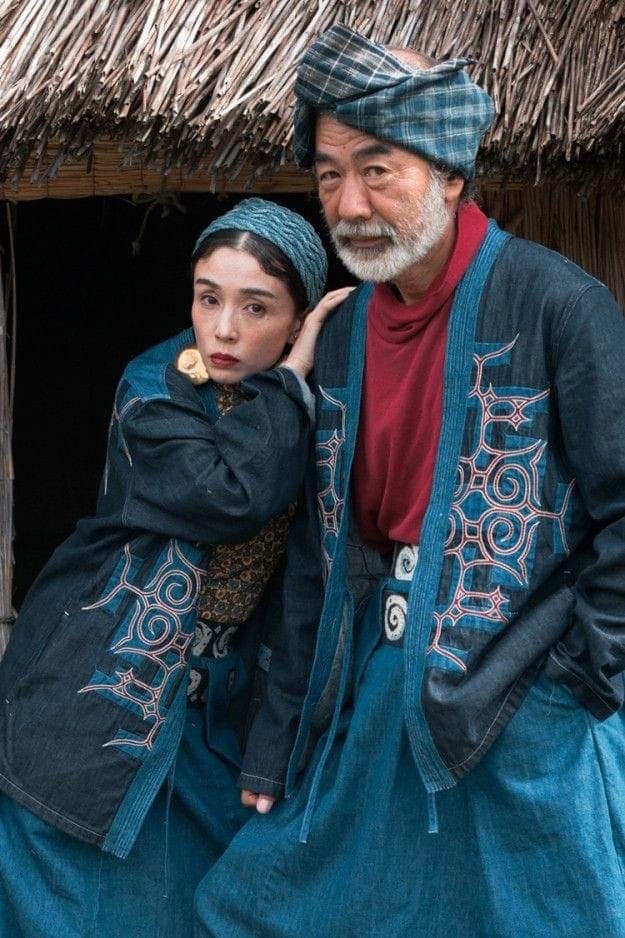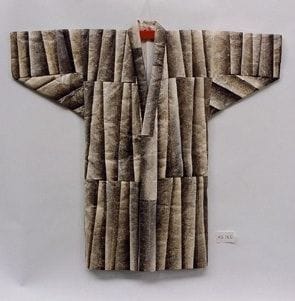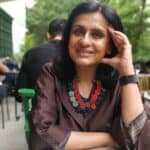18 Aug Ainu, a Japanese Community that Reveres Textiles
Ainu: We who love textiles know what it is to revere an exceptional piece of weaving or embroidery. But there is a community where this is literally practiced. And that is by the Ainu.
History of Ainu
The Ainu have lived on the island of Hokkaido for millennia, populating a culture distinct from the Japanese. Following a Hunter-gatherer lifestyle, they, like most communities that live off the land, revered all things natural. This reverence interestingly extended to tools and clothes, the minutiae of daily life. One fascinating aspect of their culture is the reverence of bears, which are seen as gods. The Ainu would often collect bear cubs and bring them up in their homes, exactly as they brought up children. Eventually, these bears were sacrificed in a ritualistic ceremony, with their flesh and fur highly valued as divine.




From the 7th century, the Ainu came under Japanese influence, not always peacefully. Eventually, the island became part of Japan, with a fusion of cultures between the two. The Ainu were forced to abandon their Hunter-gatherer lifestyle or even use their language. Fortunately, there has been an attempt to preserve Ainu culture and see them as a distinct community.

AINU TEXTILES
Since the Ainu revered the natural, traditionally, their garments were made from salmon skin, bast fiber plants like hemp and nettle, and elm bark. Animal hides were used too, as were linden trees. The entire process of changing these fibers into cloth was highly symbolic and considered healing.
The coming of the Japanese made cotton available, though it was so expensive at the start that it was used only for motifs on ceremonial apparel. As it became readily available, the entire garment was manufactured from cotton.



The making of apparel and its embellishment in Ainu culture was considered women’s work, and the skills were passed from mother to daughter. The book ‘The Fabric of Indigeneity: Ainu Identity, Gender, and Settler Colonialism‘ puts it beautifully: Ainu women insert their feelings toward their intended recipients into the cloth itself, “Stitch by stitch as the embroidery is sewn, the heart of the seamstress is inserted into the cloth of the garment. When the wearer puts the garment on their body, the sentiments of the artisan are said to be transmuted, and the wearer is protected by this passion, woven into the cloth itself, through the protective motif embroidered on the coat”.
In other words, both the creator as well the wearer are linked through the wearing of the garment, which carries a strong spiritual and protective element. Babies were swaddled in strips of used cloth, linking them to the ancestors who had gone before. The fabric was even used medicinally, tying it over injuries in a belief that it would heal.
EMBELLISHMENT
Ceremonial Ainu apparel was embellished with embroidery and appliqué, the motifs of which varied by region. Common motifs were thorns and spirals, added to vulnerable areas like hems, collars, and cuffs. Most patterns were geometric but interpreted organically. These motifs carried spiritual and healing powers, too, in the iconography of the Ainu. Needlework was mostly freehand, using couching and chain stitch.




Ainu textiles today
A surprising number of these textiles survive in current times, possibly because of the reverence with which they were treated. They are considered invaluable, being displayed in museums as markers of heritage. From the 1980s, several textile scholars have studied museum pieces, photographs, and other archives to revive textiles. Many hold classes and exhibitions to disseminate their knowledge. Many revivalists consider that their creations connect them to a long line of traditional values, much as the original Ainu believed. In my opinion, this applies not just to Ainu textiles, but to any textile that we may have inherited. When we use or wear an inherited textile, it somehow imbues us with the protection and spirit of the ancestor who originally wore it. Something to consider deeply in these times, when clothing is so disposable. Time to go back to mindfulness in what we consume and how we consume it.

AUTHOR BIO
Mira Gupta is a well-known curator and designer in craft-based luxury. She has had working stints with Fabindia, Good Earth, and Ogaan to promote the cause of craft. She is deeply interested in art, travel, architecture, and culture.
Read more articles by the Author HERE






No Comments